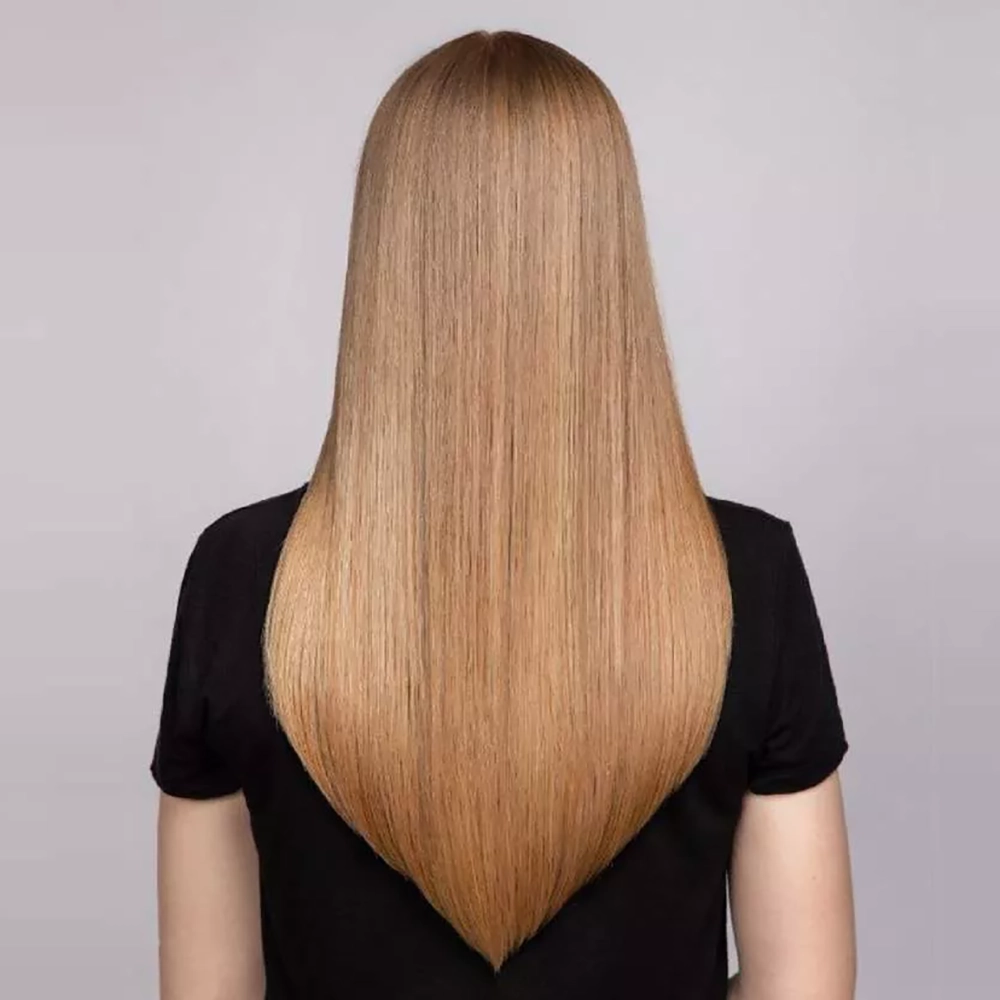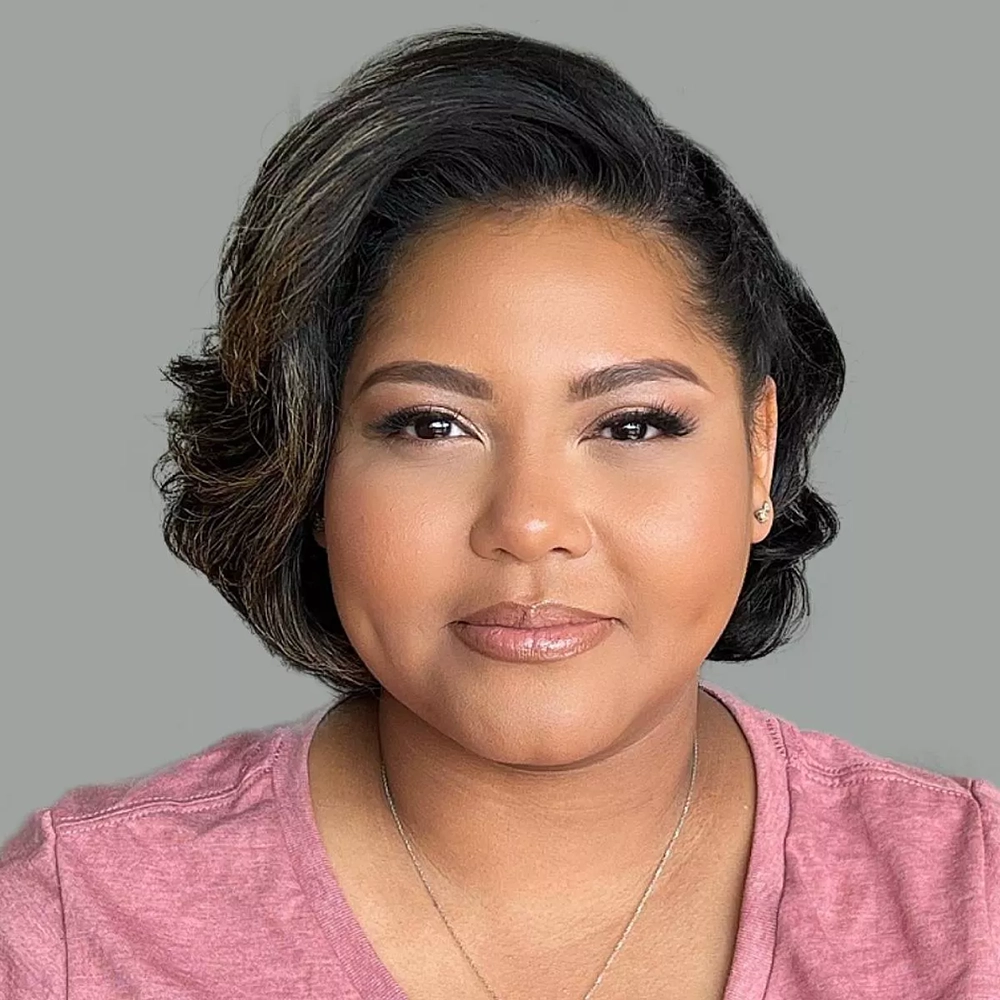Understanding the nature of thick hair
Thick hair is a dream for many individuals. It is often associated with strong and healthy strands that can withstand any styling. However, those with thick hair know that it comes with its own set of challenges and requires special care to keep it looking and feeling its best.
One of the key characteristics of thick hair is its abundance of strands. People with thick hair have a higher number of hair follicles on their scalp, which means there is more hair to manage and style. This can make styling time-consuming and sometimes overwhelming.
Another characteristic of thick hair is its volume. Thick hair tends to have a lot of natural volume, which can be a blessing or a curse depending on how it is styled. While some people love the added fullness and body, others find it difficult to control and style their hair.
- Managing: To manage thick hair, it is important to choose the right haircare products specifically designed for this hair type. Look for shampoos and conditioners that are hydrating and nourishing, as thick hair can be prone to dryness.
- Styling: When it comes to styling thick hair, it is best to invest in high-quality styling tools, such as a wide-toothed comb or a paddle brush, to prevent breakage and damage. Additionally, using heat protectant sprays before using hot styling tools is essential to protect the hair from heat damage.
- Nourishing: Nourishing thick hair from within is crucial for maintaining its health and vitality. Eating a balanced diet that includes foods rich in vitamins and minerals, such as fruits, vegetables, and lean proteins, can contribute to strong and healthy hair.
| Challenges of Thick Hair | Solutions |
|---|---|
| Difficulty in managing and styling | Use the right haircare products and invest in quality styling tools |
| Tends to be dry and prone to frizz | Choose hydrating and nourishing hair products and use deep conditioning treatments regularly |
| Can feel heavy and weigh down the scalp | Opt for lighter hair products and avoid applying excessive amounts of styling products |
Understanding the nature of thick hair is the first step in effectively caring for and styling it. With the right techniques, products, and a little patience, you can embrace and enhance the natural beauty of your thick locks.
Choosing the right hair care products
Choosing the right hair care products is crucial for maintaining healthy and beautiful hair. With so many options available in the market, it can be overwhelming to select the products that are best suited for your hair type and needs. To make the decision easier, consider the following factors:
1. Hair Type: Each hair type has different requirements and reacts differently to different products. The first step in choosing the right hair care products is to determine your hair type. Is it oily, dry, normal, or a combination? Is it straight, wavy, curly, or coily? Understanding your hair type will help you select products that target specific concerns and offer the desired results.
2. Ingredients: Pay attention to the ingredients listed on the product labels. Avoid products that contain harsh chemicals, sulfates, and parabens as these can strip the hair of its natural oils and lead to damage and dryness. Look for products that are formulated with natural and nourishing ingredients such as argan oil, coconut oil, shea butter, and aloe vera.
3. Concerns and Goals: Identify your specific hair concerns and goals. Are you looking to add volume, reduce frizz, promote hair growth, or repair damage? Different hair care products cater to different needs. For example, if you have color-treated hair, opt for products specially designed to protect and maintain the vibrancy of your hair color.
List of Hair Care Products:
| Product Category | Example Products |
|---|---|
| Shampoo | Pantene Pro-V Daily Moisture Renewal Shampoo OGX Nourishing Coconut Milk Shampoo Moroccanoil Hydrating Shampoo |
| Conditioner | Herbal Essences Hello Hydration Moisturizing Conditioner Garnier Fructis Sleek and Shine Intensely Smooth Leave-In Conditioning Cream Briogeo Don’t Despair, Repair! Deep Conditioning Mask |
| Treatment/Mask | Olaplex Hair Perfector No. 3 SheaMoisture Jamaican Black Castor Oil Strengthen & Restore Masque Redken Extreme Length Primer |
| Styling Products | Living Proof Perfect Hair Day 5-in-1 Styling Treatment TRESemmé Thermal Creations Heat Tamer Leave-In Spray Bumble and Bumble Surf Spray |
| Hair Oil/Serum | Moroccanoil Treatment Olaplex No. 7 Bonding Oil The Ordinary 100% Organic Cold-Pressed Moroccan Argan Oil |
Conclusion: Choosing the right hair care products is essential for maintaining healthy and beautiful hair. Consider your hair type, the ingredients used in the products, and your specific concerns and goals. By selecting products tailored to your needs, you can effectively promote hair health and achieve the desired results.
Developing a consistent hair care routine
Developing a consistent hair care routine is essential for maintaining healthy and beautiful hair. By establishing a routine, you can ensure that your hair receives the proper care it needs on a regular basis. Whether you have thick or thin hair, following a consistent hair care routine can help address specific hair concerns and promote overall hair health.
A consistent hair care routine involves regular activities such as washing, conditioning, and styling your hair. These activities may vary depending on your hair type and personal preferences. However, there are some general guidelines that can be followed to develop an effective routine.
Firstly, it’s important to determine the frequency of washing your hair. Washing your hair too frequently can strip away natural oils, leading to dryness and damage. On the other hand, washing too infrequently can lead to a buildup of dirt and oil, resulting in a greasy scalp. Finding the right balance is key. Generally, washing your hair two to three times a week is sufficient for most people.
Next, choose the appropriate shampoo and conditioner for your hair type. Thick hair requires products that provide hydration and manageability. Look for shampoos and conditioners specifically formulated for thick or coarse hair. These products typically contain moisturizing ingredients such as shea butter or argan oil.
After washing, it’s essential to condition your hair to restore moisture and nourish the strands. Apply conditioner from the mid-lengths to the ends of your hair, as these areas are more prone to dryness. Leave the conditioner on for a few minutes to allow it to penetrate the hair shaft before rinsing it out thoroughly.
In addition to washing and conditioning, incorporating hair masks or deep conditioning treatments into your routine can provide extra nourishment for your hair. These treatments can be used once a week or as needed, depending on your hair’s condition and level of damage.
Aside from cleansing and conditioning, it’s important to protect your hair from heat styling and environmental factors. Before using any heat styling tools, apply a heat protectant product to minimize damage caused by high temperatures. Additionally, consider using a leave-in conditioner or serum to provide added protection and hydration throughout the day.
To maintain a consistent hair care routine, it’s helpful to establish a schedule and stick to it. Consider dedicating specific days or times in your week for hair care activities. By incorporating these habits into your routine, you can develop healthier and more manageable hair over time.
In conclusion, developing a consistent hair care routine is crucial for the overall health and appearance of your hair. By following a routine that includes proper washing, conditioning, and protection, you can promote healthy, nourished hair. Take the time to understand your hair type, choose suitable products, and establish a schedule that works for you. With consistency and dedication, you can achieve your desired hair goals.
Exploring effective styling techniques
When it comes to styling our hair, we all strive for that perfect look that makes us feel confident and put together. But with so many different hair types and textures, finding the right styling techniques can sometimes feel like a daunting task. In this blog post, we will be exploring some effective styling techniques that can help you achieve your desired look while keeping your hair healthy and vibrant.
First and foremost, it’s important to understand your hair type and texture before diving into any styling routine. For individuals with thick hair, it can be particularly challenging to find techniques that work best. Thick hair tends to be more resistant and can often require more time and effort to style. However, with the right approach, you can achieve stunning results.
One effective styling technique for thick hair is to use heat tools in moderation. While they can help create beautiful and sleek hairstyles, excessive heat can cause damage and make your hair look dry and brittle. To protect your strands, always apply a heat protectant spray or serum before using any heated styling tools. Additionally, try to limit the use of heat tools to no more than a few times a week, and opt for lower heat settings whenever possible.
- Use heat tools in moderation
- Apply a heat protectant spray or serum before styling
- Limit the use of heat tools to no more than a few times a week
- Opt for lower heat settings whenever possible
Another effective styling technique for thick hair is to embrace textured and voluminous hairstyles. Rather than trying to fight against the natural thickness of your hair, work with it to create stylish and effortless looks. By adding volumizing products, such as mousses or sprays, to your roots and using your fingers to scrunch and tousle your hair, you can achieve a beautiful texture that enhances your natural volume. This technique is not only time-efficient but also showcases the fullness and dimension of your thick locks.
Lastly, don’t forget about the power of braids and updos. These hairstyles are perfect for managing long, thick hair while still looking chic and put together. Experiment with different braiding techniques, such as fishtail braids or Dutch braids, to add an element of interest to your hair. If you prefer an updo, try a messy bun or a twisted upstyle to keep your hair off your face while still maintaining a stylish look. These styles are not only versatile but also protect your hair from damage caused by constant manipulation and brushing.
| Effective Styling Techniques for Thick Hair: |
|---|
| Use heat tools in moderation |
| Apply a heat protectant spray or serum before styling |
| Limit the use of heat tools to no more than a few times a week |
| Opt for lower heat settings whenever possible |
| Embrace textured and voluminous hairstyles |
| Add volumizing products to enhance natural volume |
| Experiment with braids and updos |
| Try different braiding techniques |
| Protect your hair with updos |
Nourishing your hair from within
Nourishing your hair from within is an essential step towards achieving healthy and luscious locks. While using external hair care products can certainly help, it is equally important to focus on your diet and overall well-being. Your hair relies on a range of nutrients to grow and thrive, so nourishing it from the inside out is key to maintaining its strength and vitality.
One of the most important nutrients for hair health is protein. Hair is primarily made up of a protein called keratin, so ensuring an adequate intake of protein-rich foods is crucial. Incorporate lean sources of protein into your diet such as eggs, lean meats, fish, tofu, and legumes. These provide the building blocks that your hair needs to grow and repair itself.
Additionally, essential fatty acids play a vital role in nourishing the hair follicles and promoting a healthy scalp. Foods rich in omega-3 fatty acids, such as salmon, avocado, nuts, and seeds, can help improve the health and appearance of your hair. Omega-3 fatty acids also have anti-inflammatory properties, which can benefit the overall health of your scalp.
Incorporating vitamins and minerals into your diet is also essential for hair nourishment. Vitamin C aids in collagen production, which is important for hair strength and elasticity. Citrus fruits, berries, and leafy greens are excellent sources of vitamin C. B vitamins, such as biotin and niacin, contribute to healthy hair growth. Include whole grains, nuts, and seeds in your meals to ensure an adequate intake of these vitamins.
In summary, nourishing your hair from within involves maintaining a balanced diet that includes ample protein, essential fatty acids, vitamins, and minerals. By incorporating these nutrients into your meals, you can support the health and vitality of your hair, promoting its growth and strength. Remember, healthy hair starts from the inside, so take care of it by fueling your body with the right nutrients.
Managing the challenges of long, thick hair
Managing the challenges of long, thick hair can be a daunting task for many individuals. While thick hair is often praised for its volume and texture, it also comes with its own set of unique challenges. From increased drying time to difficulty in styling and maintaining, individuals with long, thick hair often struggle to find the right techniques and products that cater to their specific needs. However, with the right knowledge and practices, it is possible to overcome these challenges and embrace the beauty of long, thick hair.
One of the main challenges of long, thick hair is the increased drying time. It can be frustrating to spend a significant amount of time blow-drying your hair after each wash. To tackle this issue, it is important to invest in a high-quality blow dryer with high wattage. A powerful blow dryer will help speed up the drying process and minimize the time spent on this step of your hair care routine. Additionally, using a microfiber towel to gently squeeze excess water out of your hair before blow-drying can also aid in reducing drying time.
Another challenge of managing long, thick hair is finding the right products that work effectively without weighing the hair down. When choosing hair care products, it is essential to opt for lightweight formulas that provide hydration and nourishment without leaving a heavy residue. Look for shampoos and conditioners that are specifically formulated for thick hair and provide volume and manageability. Additionally, using a leave-in conditioner or serum can help tame frizz and add shine without adding extra weight.
In addition to choosing the right products, developing a consistent hair care routine is crucial in managing long, thick hair. Regularly shampooing and conditioning your hair is important to keep it clean, healthy, and nourished. However, avoid washing your hair too frequently as it can strip away natural oils and lead to dryness. Instead, aim for washing your hair 2-3 times a week and use dry shampoo in between washes to refresh your roots and add volume.
- Invest in a high-quality blow dryer with high wattage to reduce drying time.
- Use a microfiber towel to gently squeeze excess water out of your hair before blow-drying.
- Choose lightweight hair care products specifically formulated for thick hair.
- Opt for leave-in conditioners or serums to tame frizz and add shine without weighing the hair down.
- Develop a consistent hair care routine, washing your hair 2-3 times a week and using dry shampoo in between washes.
Managing the challenges of long, thick hair may require some trial and error to find the best techniques and products that work for you. Seeking professional advice and assistance from a hairstylist who is experienced in dealing with thick hair can also be beneficial. They can provide personalized recommendations and styling tips to help you manage your long, thick hair more effectively. Embrace the beauty of your thick locks and with the right care and attention, you can confidently tackle any challenges that come your way.
Seeking professional advice and assistance
In our quest for healthy and beautiful hair, sometimes we need to seek professional advice and assistance. While it’s tempting to rely solely on our own knowledge and experiments, there are times when the expertise of a hair professional can make a significant difference. Whether you’re dealing with hair loss, struggling to find the right products, or simply desiring a fresh new look, consulting a professional can provide valuable insights and solutions.
One of the main advantages of seeking professional advice is the personalized guidance and recommendations they can offer. Hair professionals are trained to analyze and understand the unique characteristics of your hair, such as its texture, thickness, and condition. By taking into account these factors, they can provide tailored advice on the best hair care products, techniques, and treatments for you. This targeted approach ensures that you’re using the right products and following the most effective practices for your specific needs.
Another benefit of consulting a professional is their access to a wide range of products and treatments. While there’s an abundance of hair care products available in the market, it can be overwhelming to navigate through them and find the ones that suit your hair type and concerns. Hair professionals have in-depth knowledge about different brands, ingredients, and formulations and can recommend the most suitable options for you. They may also have access to specialized treatments and services that are not readily available to the general public, offering you unique solutions to enhance the health and beauty of your hair.
- Personalized guidance and recommendations
- In-depth knowledge about products and treatments
- Access to specialized services and solutions
| Benefits of Seeking Professional Advice and Assistance: |
|---|
| 1. Personalized guidance and recommendations |
| 2. In-depth knowledge about products and treatments |
| 3. Access to specialized services and solutions |
Furthermore, if you’re experiencing specific hair or scalp issues, a professional can diagnose the problem and provide targeted solutions. Whether it’s addressing hair loss, dryness, dandruff, or any other concern, their expertise can help identify the underlying causes and recommend appropriate treatments. They can also guide you on how to properly care for your hair and scalp to prevent future issues and maintain optimum health.
Lastly, seeking professional advice and assistance can save you time and money in the long run. With the abundance of information available online, it’s easy to get overwhelmed and make costly mistakes when it comes to hair care. By consulting a professional, you can avoid trial-and-error approaches, unnecessary product purchases, and potential damage to your hair. Their knowledge and experience can streamline your hair care routine and ensure you’re investing in the right products and treatments that will yield the desired results.




































